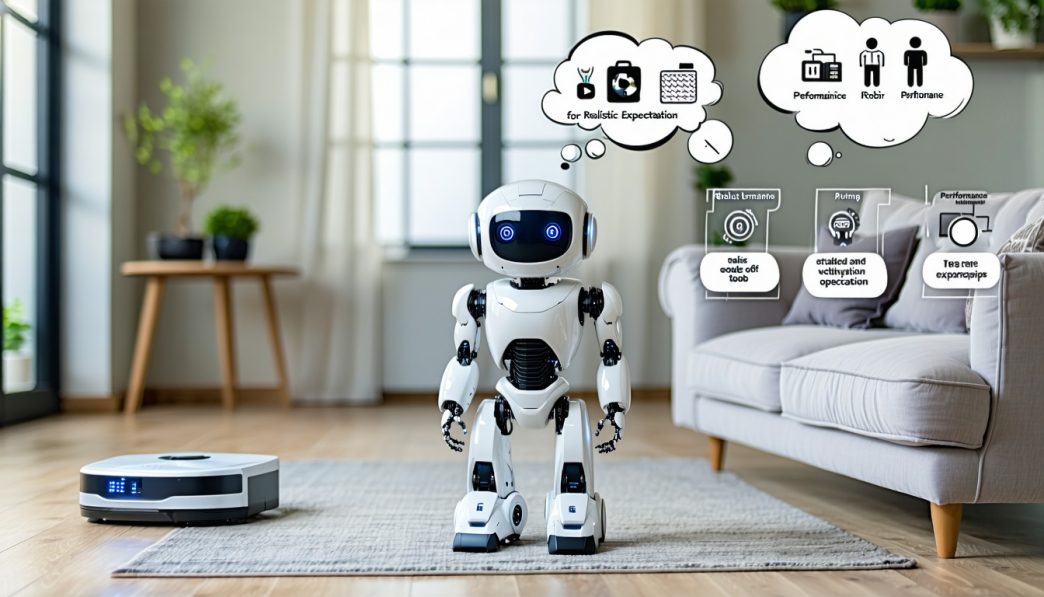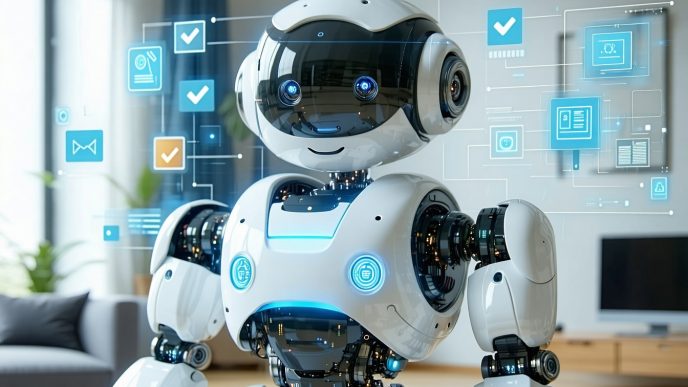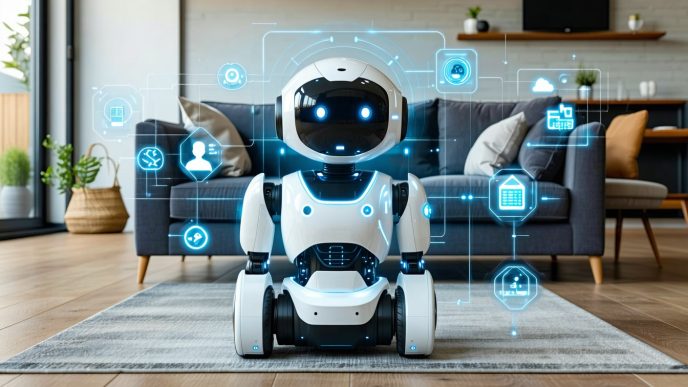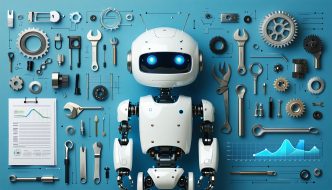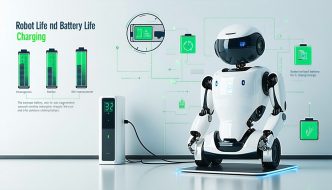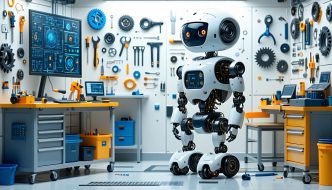Exploring the Capabilities of Robots
The world of robotics is rapidly evolving, and potential buyers should understand both the current state of technology and the anticipated advancements by 2025. This knowledge can help in setting realistic expectations for robot performance.
Current State of Robot Technology
As of now, robots have made significant strides in various sectors, particularly in household applications and basic assistive tasks. They utilize advanced algorithms, machine learning, and sensors to perform a variety of functions.
Below is a summary of current capabilities:
| Capability Category | Examples | Current Technology Level |
|---|---|---|
| Household Chores | Vacuuming, lawn mowing | Mostly automated |
| Assistive Roles | Mobility aids, medication reminders | Basic functionality |
| Educational and Entertainment | Interactive learning tools | Limited interactivity |
Robots currently excel at executing predefined tasks with high efficiency. For instance, robotic vacuum cleaners can navigate spaces and clean floors, while some assistive robots help elderly users manage daily activities. However, many of these robots lack advanced features like adaptability and deeper interaction.
Anticipated Advancements by 2025
By 2025, significant advancements in robot technology are expected. Innovations in artificial intelligence, machine learning, and robotics will enhance their capabilities.
| Anticipated Advancement | Description | Expected Impact |
|---|---|---|
| Improved AI for decision-making | Robots will make smarter choices based on scenarios | Enhanced performance |
| Enhanced emotional intelligence | Robots will recognize and respond to user emotions | Better human interaction |
| Greater adaptability | Robots will navigate and adapt to complex environments | Increased utility |
Potential buyers should look forward to robots that are not only more capable but also better at integrating into daily life. To ensure an informed purchase, it is advisable to research what to know before you buy a robot and consider factors like robot setup and learning curves.
As advancements unfold, understanding these progressions helps foster realistic expectations about what robots can accomplish in households by 2025. This understanding also emphasizes the need for ongoing research into options, capabilities, and features that align with user needs and lifestyles.
What Robots Can Do
As technology progresses, robots are becoming more integrated into everyday life. Understanding what these devices can offer is essential for anyone considering a purchase. Here are some areas where robots are making a significant impact.
Household Chores and Cleaning
One of the most common applications for home robots is handling household chores and cleaning tasks. Various robotic devices are currently capable of performing specific tasks, such as vacuuming, mopping, and window cleaning. These tasks can save time and reduce the burden of maintenance.
The table below highlights the different types of household tasks currently performed by home robots:
| Task | Robot Type | Estimated Time Saved |
|---|---|---|
| Vacuuming | Robotic Vacuum | 2-3 hours per week |
| Mopping | Robotic Mop | 1-2 hours per week |
| Window Cleaning | Window Cleaning Robot | 1 hour per month |
As robot efficiency improves, homeowners can expect these devices to handle chores autonomously and effectively, allowing humans to focus on other important activities.
Assistive Tasks for Elderly and Individuals with Disabilities
Robots are increasingly utilized to support the elderly and individuals with disabilities. These assistive technologies can provide various functions, including companionship, reminders for medication, and even helping with mobility challenges.
Key functionalities include:
- Medication reminders and tracking
- Assistance with basic daily activities
- Emergency response capabilities
Such features enhance quality of life and provide peace of mind for families. For more information on selecting a robot tailored to specific needs, visit our article on what to know before you buy a robot.
Educational and Entertainment Roles
Robots also play a significant role in educational and entertainment settings. They can assist children with learning tasks, promote engagement through interactive play, and provide valuable educational content.
Here are some functions these robots can perform:
| Function | Example Application |
|---|---|
| Educational Games | Math and language learning |
| Interactive Storytelling | Engaging children with narratives |
| Robotics Programming Lessons | Teaching fundamental coding concepts |
These educational robots can foster creativity and critical thinking in children while offering entertainment options. For families looking to combine learning with fun, evaluating available options can lead to fulfilling choices. For further considerations, explore our article on understanding robot types and capabilities.
Robots are becoming increasingly capable, offering a range of functionalities that can enhance daily life. However, prospective buyers should remain informed about realistic expectations for robot performance, efficiency, and usability to make the best decisions for their unique needs.
Limitations of Robots
As technology advances, it is essential for potential robot buyers to have a clear understanding of the limitations that current robots exhibit. This section will explore three significant limitations: complex decision-making abilities, emotional intelligence and human interaction, and adaptability to unforeseen situations.
Complex Decision-making Abilities
While robots are effective at performing specific tasks, their ability to handle complex decision-making scenarios is limited. Robots often rely on pre-programmed algorithms and data-driven models, which may not account for unique or intricate situations. For example, when presented with ambiguous information or unexpected changes, robots may struggle to make appropriate decisions.
Robots excel in structured environments with clear parameters, but they can falter in unpredictable scenarios. Here’s a comparison of decision-making capabilities of robots versus humans:
| Capability | Robots | Humans |
|---|---|---|
| Handling Routine Tasks | Yes | Yes |
| Adapting to New Situations | Limited | Highly adaptable |
| Critical Thinking | No | Yes |
| Problem-solving | Basic | Advanced |
This limitation underscores the necessity for human intervention in high-stakes situations. Prospective buyers should recognize that robots will require assistance in intricate decision-making tasks.
Emotional Intelligence and Human Interaction
Another notable limitation of robots is their lack of emotional intelligence and the ability to interact meaningfully with humans. Although advancements in artificial intelligence have enabled some robots to recognize speech and respond to commands, they cannot truly understand human emotions or context.
This lack of emotional insight can make interactions with robots feel mechanical or impersonal. For example, while a robot can recognize when someone is upset based on voice tone, it cannot empathize or provide emotional support. Here’s how robots compare to humans in emotional intelligence:
| Aspect | Robots | Humans |
|---|---|---|
| Recognizing Emotions | Limited | High |
| Providing Empathy | No | Yes |
| Engaging in Meaningful Conversations | Basic | Advanced |
For families or individuals seeking companionship, it is crucial to understand that robots will not replace the emotional connections formed with humans.
Adaptability to Unforeseen Situations
Robots often struggle to adapt to unforeseen situations. They thrive in stable, controlled environments but may have difficulty responding to changes or challenges that arise unexpectedly. For instance, a home cleaning robot might succeed in a clear area but could become confused if faced with a new piece of furniture or an obstacle.
Adaptability is essential for effective task execution in dynamic environments. Here’s a side-by-side comparison of adaptability traits:
| Trait | Robots | Humans |
|---|---|---|
| Adapting to New Environments | Limited | High |
| Learning from Mistakes | No | Yes |
| Spontaneity | No | Yes |
Understanding these limitations is vital for first-time robot buyers and tech-savvy families. Those considering the integration of a robot into their daily lives should manage their expectations regarding performance. For more insights on realistic expectations for robot performance, visit what to know before you buy a robot.
Realistic Expectations for Robot Performance
As technology evolves, many individuals consider integrating robots into their homes. Understanding the realistic expectations for robot performance is crucial for first-time buyers and tech-savvy families. This section discusses the scope of tasks that robots can effectively handle and the necessity for human intervention and supervision.
Understanding the Scope of Tasks Robots Can Handle
Robots have made remarkable strides in various domains, but their capabilities are still limited. The following table outlines common tasks that robots can perform effectively, along with their respective efficiency ratings based on current technology.
| Task Type | Efficiency Rating (1-5) | Description |
|---|---|---|
| Household Cleaning | 4 | Robots can efficiently handle vacuuming and mopping. |
| Grocery Delivery | 3 | Robots can deliver but may face obstacles. |
| Monitoring Home Security | 4 | Surveillance robots provide alerts for unusual activities. |
| Assistive Tasks for Elderly | 3 | Robots may help with reminders or simple tasks. |
| Entertainment and Companionship | 3 | Some robots can engage users in simple interactions. |
While robots excel in routine and repetitive tasks, they may struggle in settings that demand creativity or complex judgments. For a deeper understanding of available options, refer to our article on understanding robot types and capabilities.
Recognizing the Need for Human Intervention and Supervision
Even though robots can handle specific tasks, human oversight is often necessary for optimal performance. The reasons for this include:
- Error Handling: Robots may encounter situations they cannot manage, particularly in unpredictable environments.
- Complex Tasks: Some tasks require nuanced decision-making and emotional understanding, which robots currently lack.
- Safety Concerns: Supervision is important to ensure safe operation, especially in households with pets or children.
A majority of robot users reported needing assistance to manage robot tasks effectively, as illustrated in the following table.
| Task Category | Percentage Requiring Supervision (%) |
|---|---|
| Cleaning and Maintenance | 45 |
| Safety Monitoring | 30 |
| Assistance for Elderly | 40 |
| Entertainment Engagement | 25 |
For recommendations on maintenance and common challenges, view our article on robot maintenance and repair needs.
Potential buyers should carefully consider these factors when evaluating robot performance. A blend of robotic assistance and human intelligence typically yields the best outcomes in household management and daily activities. For insights into setup and compatibility, refer to articles on robot setup and learning curves and robot safety and home compatibility.
Challenges Ahead for Robotics
As the robotics industry continues to progress, future buyers need to understand the challenges that accompany the integration of robots into daily life. This section will focus on ethical and privacy concerns, regulatory issues and safety standards, and future directions for robot development.
Ethical and Privacy Concerns
The deployment of robots in homes and workplaces raises several ethical considerations. Privacy is a significant concern, especially with robots that collect data for functionality, such as monitoring household tasks or user preferences. These devices may capture sensitive information, potentially leading to misuse or data breaches. It is essential for consumers to consider how their data will be stored, used, and protected.
| Potential Concern | Description |
|---|---|
| Data Collection | Robots often collect data to improve functionality. Ensuring this data is secure is crucial. |
| Surveillance | Home robots that monitor activities could unintentionally invade privacy. |
| Usage Transparency | Users should be aware of how their data is being used by the robot’s software. |
Regulatory Issues and Safety Standards
Regulation in the robotics sector is still developing. Ensuring safety and compliance with established standards is vital before adopting robotic technologies. Consumers should be aware of existing regulations and advocate for comprehensive safety standards to protect both users and the general public.
| Regulation Aspect | Description |
|---|---|
| Safety Standards | Must ensure robots do not pose risks to users or their environments. |
| Compliance | Robots should adhere to local and national regulations regarding operation and safety. |
Potential buyers are encouraged to research the regulatory framework in their region, especially concerning robot safety and home compatibility.
Future Directions for Robot Development and Integration
As technology evolves, so will the capabilities of robots. Continuous development in artificial intelligence, machine learning, and robotics will result in more advanced functionalities. Understanding these advancements is crucial for prospective buyers, as they will shape future user experiences.
| Development Focus | Description |
|---|---|
| AI Integration | Enhanced decision-making capabilities for more autonomous functioning. |
| Adaptability | Future robots may become more adaptable to different environments and tasks. |
| User Experience | Improved interfaces for easier interaction and setup, focusing on robot setup and learning curves. |
For first-time buyers, grasping these challenges and considerations is essential. Knowledge about the ethical implications, regulatory landscape, and future advancements can enhance their decision-making process. Buyers should also look into what to know before you buy a robot to ensure they have realistic expectations for robot performance.
Key Considerations for Potential Robot Buyers
When contemplating the purchase of a home robot, it is essential for potential buyers to consider several factors to ensure that their investment meets their needs. By understanding these considerations, they can set realistic expectations for robot performance.
Assessing Your Specific Needs and Expectations
Before purchasing a robot, buyers should evaluate what tasks they want the robot to perform. Different robots are designed for various functions, such as cleaning, monitoring, or assisting elderly family members. Identifying core needs will help narrow down choices.
| Need | Robot Type |
|---|---|
| Cleaning surfaces | Robotic vacuum or mop |
| Elderly assistance | Companion robot or assistive technology |
| Monitoring home security | Surveillance robots |
To better understand available options, prospective buyers can refer to our guide on understanding robot types and capabilities.
Researching Available Options and Technologies
The market for home robots is vast and constantly evolving. Potential buyers should conduct thorough research into different models, their features, and specifications. Factors to consider include the robot’s functionality, software compatibility, and user reviews.
Key aspects of research should include:
- Performance metrics: Evaluate the efficiency of robots in their intended tasks.
- User experience: Insights from current users regarding ease of use, setup, and functionality.
- Brand reputation: Understanding the reliability and performance history of different manufacturers.
Additionally, potential buyers should explore the potential need for software updates and improvements. Information can be found in our article about robot software updates and upgrades.
Budgeting for Maintenance and Upgrades
Purchasing a robot involves more costs than just the initial price. Buyers must plan for ongoing maintenance and possible upgrades in the future. Adequately budgeting for these factors ensures a smooth ownership experience.
| Cost Component | Estimated Cost |
|---|---|
| Replacement parts (e.g., batteries, brushes) | $20 – $100 annually |
| Maintenance services | $50 – $150 annually |
| Software updates (if applicable) | Free – $50 annually |
Along with these costs, potential buyers should consider warranty options and customer support services. Understanding these aspects can aid in making a more informed decision. For more details, refer to our articles on robot maintenance and repair needs and robot warranty and customer support.
By assessing specific needs, researching options, and budgeting for future expenses, first-time robot buyers can establish realistic expectations for robot performance, leading to a more satisfactory and successful purchase experience.


